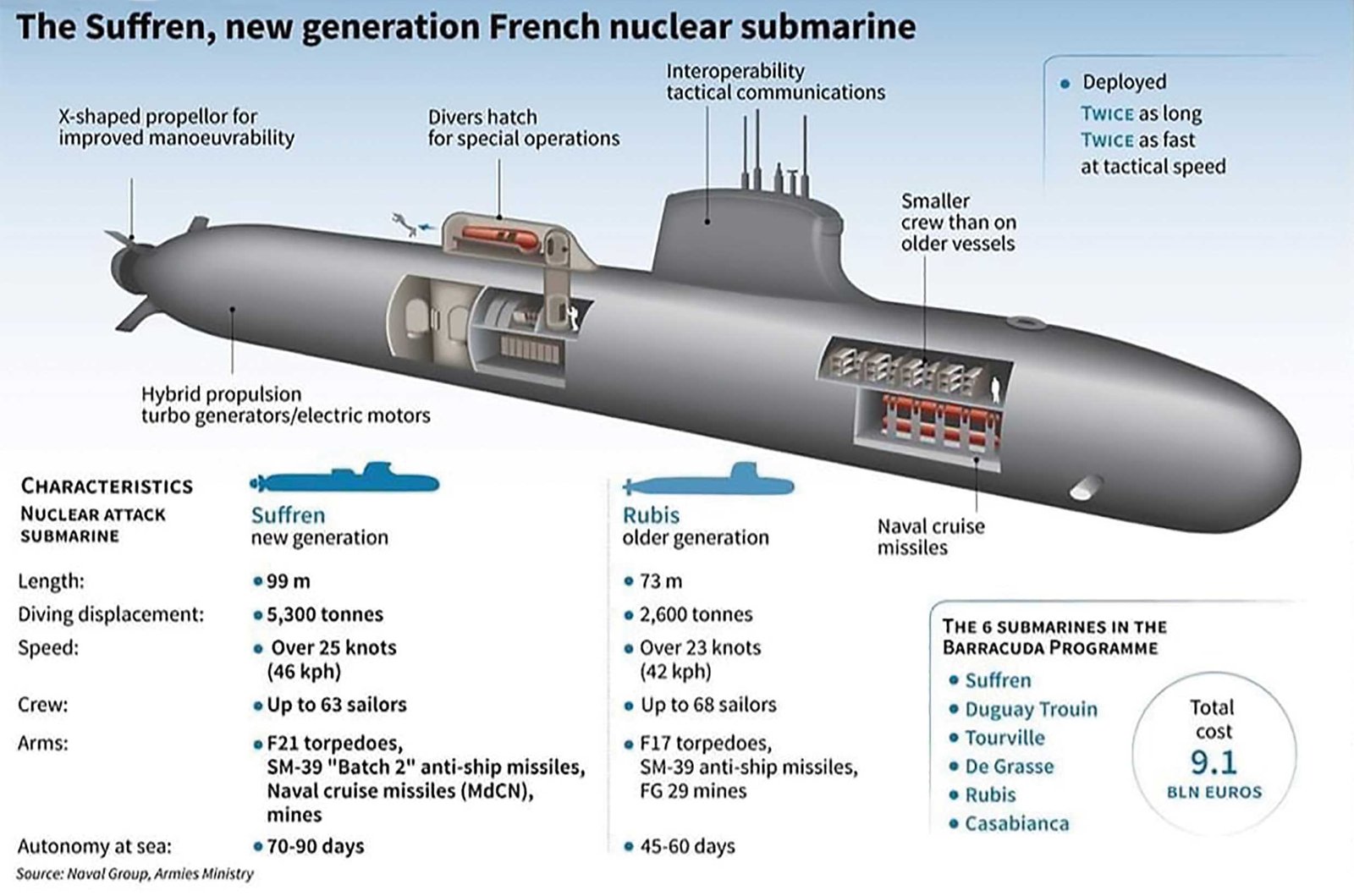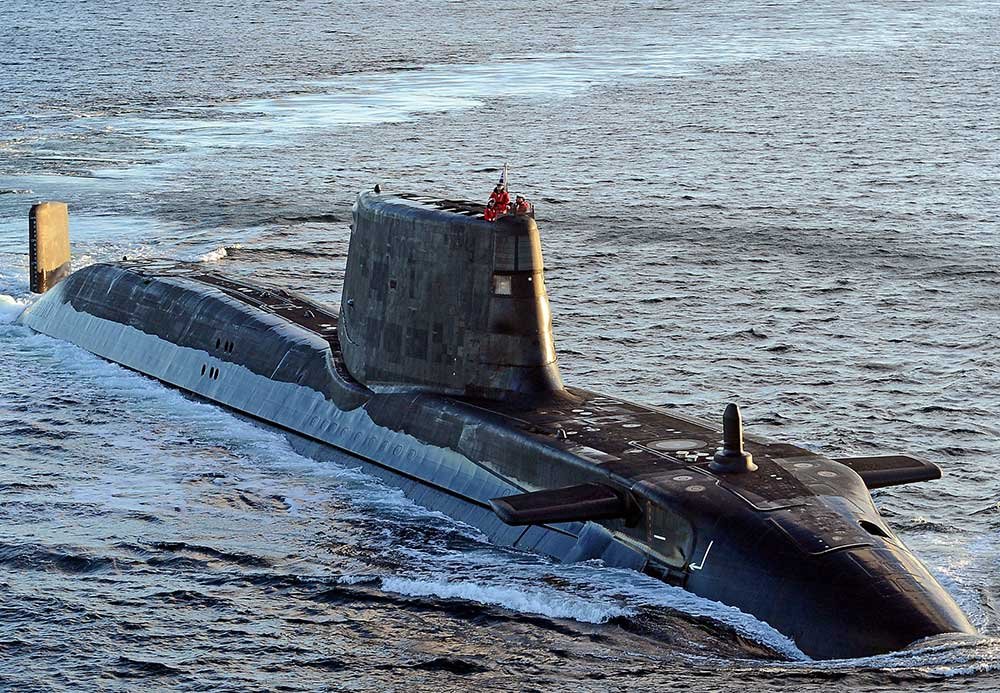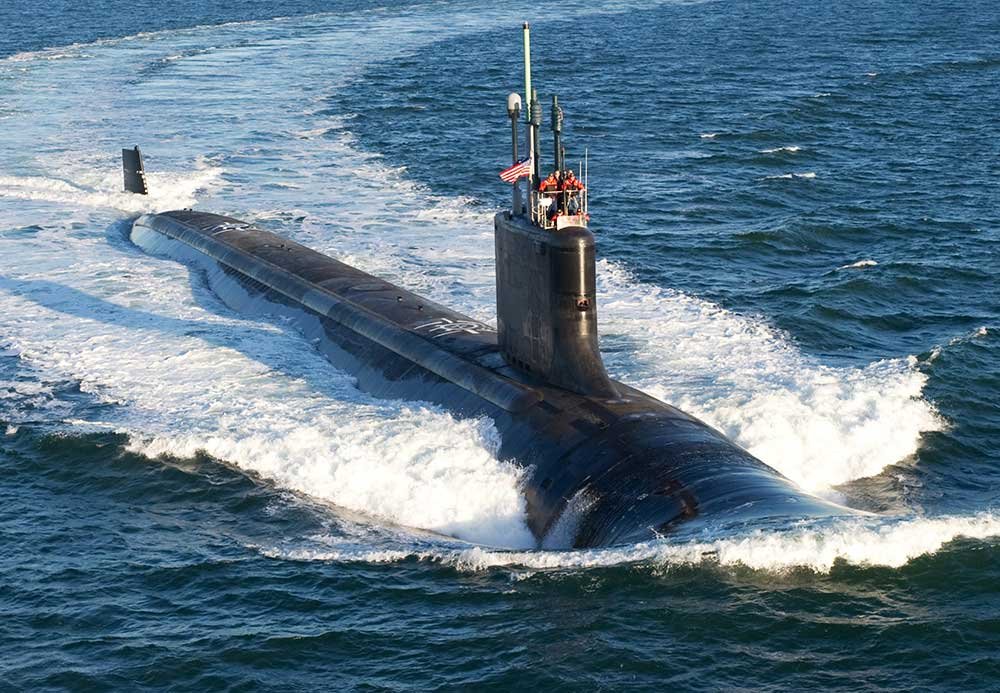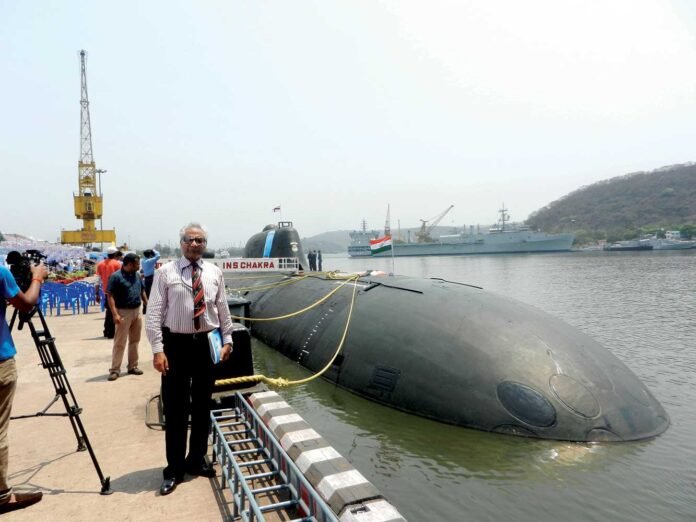On 15th September 2021, the leaders of Australia, the United Kingdom, and the United States announced a landmark trilateral security partnership known as ‘AUKUS’, reinforcing their shared commitment to a free, peaceful, and open Indo-Pacific. This agreement marked a significant shift in global defence alignments, underscoring the deepening strategic ties between the three nations, particularly in areas of intelligence sharing—leveraging the existing Five Eyes network—as well as defence technology, industrial base development, and supply chain security.
One of the first and most significant initiatives under AUKUS was the agreement to equip the Royal Australian Navy (RAN) with nuclear-powered attack submarines (SSNs). These advanced submarines possess the capability to track and neutralise enemy submarines and surface ships using underwater-launched missiles and torpedoes. Furthermore, they can project power ashore through cruise missile strikes and play an offensive role by laying mines in adversarial waters. The nomenclature ‘SSN’ stands for ‘Submersible Ship Nuclear-powered,’ indicating their ability to remain submerged indefinitely, constrained only by the endurance of their crew and onboard provisions. Given their stealth and endurance, SSNs are an indispensable asset for modern naval warfare, and global maritime powers are rapidly expanding their fleets of nuclear-powered submarines both for strategic deterrence and tactical engagements. Conversely, smaller navies, constrained by financial and technological barriers, are investing in conventional submarines with Air Independent Propulsion (AIP) systems, which allow them to remain submerged for extended periods—typically a few weeks—enhancing their survivability in contested waters.
The momentum of AUKUS accelerated further on 13th March 2023, when the three partners unveiled a comprehensive roadmap for developing Australia’s indigenous nuclear-powered submarine capability by 2030. Under this ambitious initiative, Australia has commenced extensive technical preparations, including infrastructure upgrades and workforce development. RAN personnel have been undergoing rigorous training at US and UK nuclear reactor schools to build the requisite expertise in nuclear propulsion systems. Additionally, the frequency of visits by US nuclear-powered submarines to HMAS Stirling, the naval base located on Garden Island near Perth, has increased significantly. These port visits are designed to provide hands-on exposure and operational training to Australian sailors. Lincoln Reifsteck, the US AUKUS Program Manager, underscored the strategic intent behind these visits, stating, “Each visit will build upon the previous one and allow the RAN team to grow its capabilities.”
One of the first and most significant initiatives under AUKUS was the agreement to equip the Royal Australian Navy (RAN) with nuclear-powered attack submarines (SSNs). These advanced submarines possess the capability to track and neutralise enemy submarines and surface ships using underwater-launched missiles and torpedoes
The United States Navy currently operates a formidable fleet of forty-nine SSNs, and given the evolving Indo-Pacific security landscape, there remains a possibility that Washington may lease one of its nuclear-powered submarines to the RAN. This mirrors a precedent set by India in 1987, when the Indian Navy leased the SSN INS Chakra from the Soviet Union. The lease arrangement, which included a skeleton crew from the Soviet Navy for safety and operational guidance, provided India with its first exposure to nuclear submarine operations. Recognising the need for dedicated infrastructure to support nuclear-powered vessels, India subsequently developed a specialised nuclear submarine base at Visakhapatnam. Such bases are critical for sustaining nuclear-powered fleets, as they provide essential shore-based facilities, including electric supply, air-conditioning, chilled water systems, first-line repair capabilities, and nuclear reactor maintenance.

India has Become USA’s preferred defence partner
Over the past decade, India has emerged as a key strategic partner of the United States in the defence domain, cementing this relationship through substantial procurements of American military hardware. As of 2024, India has acquired over $22 billion worth of US-made defence equipment, reflecting a significant shift in its military dependencies and operational synergies. The Indian Navy, in particular, has enhanced its interoperability with the US Navy through the induction of twelve P-8I maritime reconnaissance aircraft armed with Harpoon missiles and torpedoes, MQ-9B drones for long-endurance surveillance, MH-60R multi-role helicopters, and continuous replenishment of Harpoon missile stocks.
On 10th January 2025, President Donald Trump assumed office as the 47th President of the United States, promptly initiating a series of executive orders and policy announcements under his signature ‘Make America Great Again’ (MAGA) agenda. Among his key pronouncements, President Trump signalled his intent to impose additional tariffs on BRICS nations, including India, and hinted at the possibility of expanding sanctions. Given India’s considerable dependence on Russia for defence procurements, crude oil imports, and civil-military nuclear cooperation, any US-imposed restrictions could have far-reaching implications on Indo-Russian strategic ties.

In light of these developments, Indian Prime Minister Narendra Modi held a crucial telephonic conversation with President Trump on 27th January 2025. Following their discussion, PM Modi took to social media to reaffirm India’s commitment to bilateral ties, stating, “Delighted to speak with my dear friend President @realDonaldTrump @POTUS. Congratulated him on his historic second term. We are committed to a mutually beneficial and trusted partnership. We will work together for the welfare of our people and towards global peace, prosperity, and security.” This upcoming high-profile meeting between PM Modi and President Trump in Washington is poised to play a decisive role in shaping the trajectory of India-US relations. Furthermore, the outcome of this engagement will offer crucial insights into how India intends to balance its strategic partnerships, particularly with Russia, which remains embroiled in its protracted conflict with Ukraine.

Navy’s Plans for Two SSNs Worth Rs 40,000 Crores ($44 Billion)
India’s Defence Acquisition Council (DAC) had sanctioned six nuclear-powered attack submarines (SSNs) in 2010 under Project 78A to bolster the Indian Navy’s underwater warfare capabilities. However, the project was shelved in favour of Project 75, which prioritised conventional submarine construction. This resulted in the commissioning of six Scorpene-class submarines, while the SSN plan remained dormant despite significant advancements in India’s nuclear submarine infrastructure. Notably, the Defence Research and Development Organisation (DRDO), the Indian Navy, and Larsen & Toubro Ltd (L&T) had established an ecosystem for nuclear submarine construction, including nuclear reactor development at the Bhabha Atomic Research Centre (BARC). This led to the commissioning of India’s first indigenous nuclear ballistic missile submarine (SSBN), INS Arihant, in 2016.
The upcoming high-profile meeting between PM Modi and President Trump in Washington is poised to play a decisive role in shaping the trajectory of India-US relations. Furthermore, the outcome of this engagement will offer crucial insights into how India intends to balance its strategic partnerships, particularly with Russia, which remains embroiled in its protracted conflict with Ukraine
On 8th October 2024, the Cabinet Committee on Security (CCS), chaired by Prime Minister Narendra Modi, approved two major defence procurements: the construction of two SSNs and the acquisition of 31 MQ-9B Predator armed drones from US-based General Atomics. The SSNs will be built domestically at the Ship Building Centre (SBC) in Visakhapatnam, with an estimated budget of Rs 40,000 crore. This initiative will significantly enhance India’s naval capabilities and reinforce the country’s push for Aatmanirbharta (self-reliance), with substantial participation from the private sector.

India’s Strategic Considerations
Regardless of the chosen approach, India must address critical design and technological challenges, as it currently lacks a proven indigenous SSN design. However, integrating advanced weaponry such as the underwater-launched BrahMos missile, a concept envisioned by Dr APJ Abdul Kalam, could provide India’s SSNs with formidable strike capabilities.
The decision on India’s SSN programme will be a litmus test for its strategic autonomy. Whether New Delhi chooses to deepen its collaboration with Russia, align more closely with France, or explore a new partnership with the AUKUS bloc, the move will significantly shape India’s naval power projection and its standing in the Indo-Pacific.
The writer is a naval author and curates a Maritime Museum at C 443 Defence Colony, New Delhi and writes and lectures on maritime issues.






